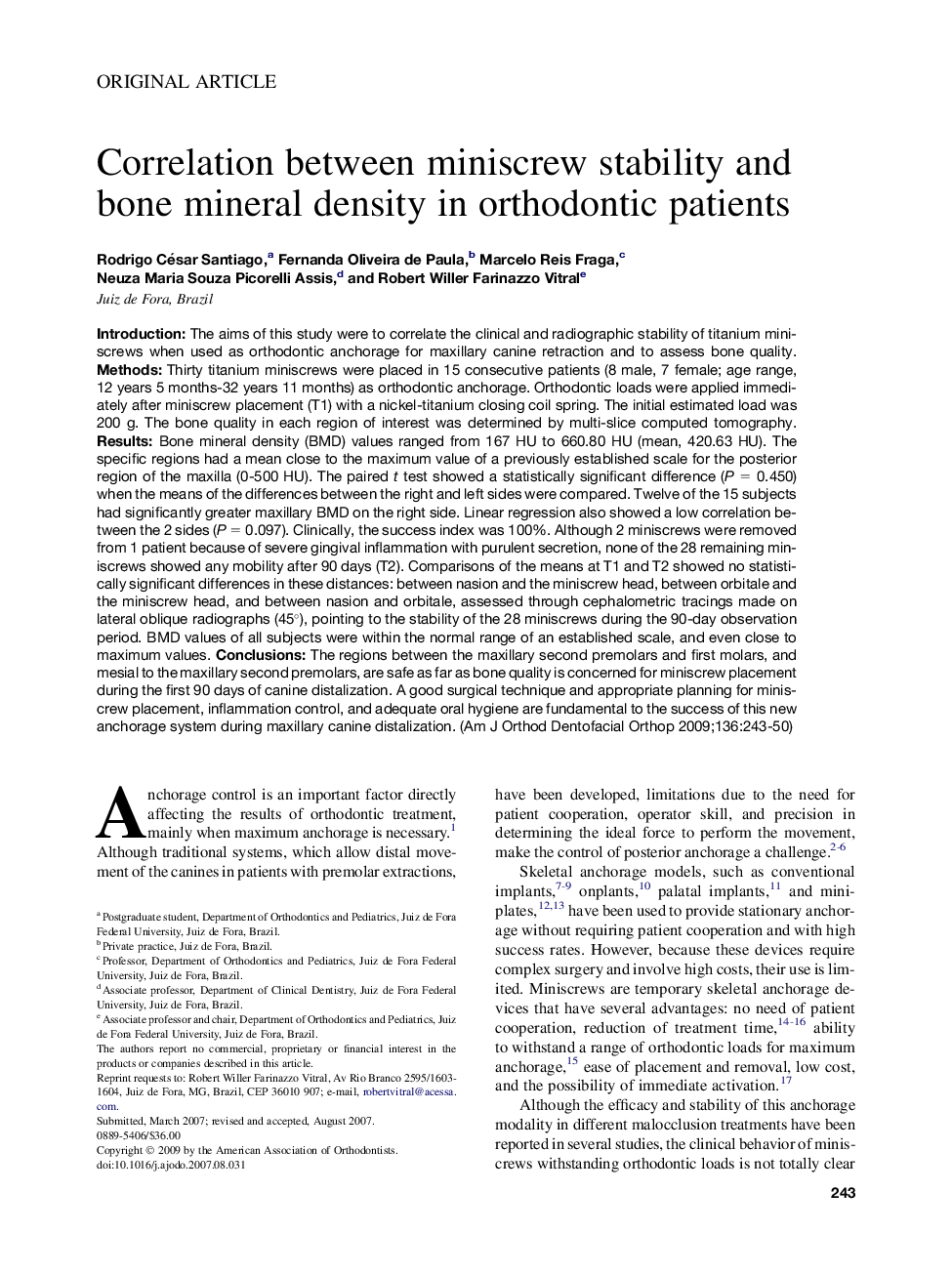| Article ID | Journal | Published Year | Pages | File Type |
|---|---|---|---|---|
| 3118851 | American Journal of Orthodontics and Dentofacial Orthopedics | 2009 | 8 Pages |
IntroductionThe aims of this study were to correlate the clinical and radiographic stability of titanium miniscrews when used as orthodontic anchorage for maxillary canine retraction and to assess bone quality.MethodsThirty titanium miniscrews were placed in 15 consecutive patients (8 male, 7 female; age range, 12 years 5 months-32 years 11 months) as orthodontic anchorage. Orthodontic loads were applied immediately after miniscrew placement (T1) with a nickel-titanium closing coil spring. The initial estimated load was 200 g. The bone quality in each region of interest was determined by multi-slice computed tomography.ResultsBone mineral density (BMD) values ranged from 167 HU to 660.80 HU (mean, 420.63 HU). The specific regions had a mean close to the maximum value of a previously established scale for the posterior region of the maxilla (0-500 HU). The paired t test showed a statistically significant difference (P = 0.450) when the means of the differences between the right and left sides were compared. Twelve of the 15 subjects had significantly greater maxillary BMD on the right side. Linear regression also showed a low correlation between the 2 sides (P = 0.097). Clinically, the success index was 100%. Although 2 miniscrews were removed from 1 patient because of severe gingival inflammation with purulent secretion, none of the 28 remaining miniscrews showed any mobility after 90 days (T2). Comparisons of the means at T1 and T2 showed no statistically significant differences in these distances: between nasion and the miniscrew head, between orbitale and the miniscrew head, and between nasion and orbitale, assessed through cephalometric tracings made on lateral oblique radiographs (45°), pointing to the stability of the 28 miniscrews during the 90-day observation period. BMD values of all subjects were within the normal range of an established scale, and even close to maximum values.ConclusionsThe regions between the maxillary second premolars and first molars, and mesial to the maxillary second premolars, are safe as far as bone quality is concerned for miniscrew placement during the first 90 days of canine distalization. A good surgical technique and appropriate planning for miniscrew placement, inflammation control, and adequate oral hygiene are fundamental to the success of this new anchorage system during maxillary canine distalization.
